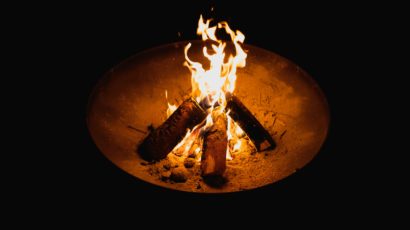HealthFirst First Aid Toolkit #1: Have your emergency protocol to hand – remember DRABC!
Having a clear protocol in a medical emergency is vital because it reduces panic, ensures a quick response, and minimises errors. A structured plan provides step-by-step guidance, keeping everyone calm and focused when seconds count.
At HealthFirst, we teach a simple mnemonic to remember your emergency protocol: DRABC (Doctor ABC).
D = Danger – Before you approach, ensure you, the casualty and any bystanders are safe.
R = Response – Is the casualty conscious? Shake their shoulders, ask them: “Can you hear me? Are you OK?”
If they respond, they must be breathing. Ask them what has happened. Deliver first aid and get help as needed.
If they don’t respond, shout for help and move onto:
A = Airway – With the casualty on their back, tilt their head back to open their airway (beware of possible neck injury).
B = Breathing – Check to see if the casualty is breathing: look, listen and feel for breaths.
If the casualty is not breathing normally, call an ambulance and send for a defibrillator.
C = Circulation – Start Basic Life Support: for adults, begin with 30 chest compressions, followed by 2 rescue breaths. Continue cycles of 30 compressions and 2 breaths until the emergency services arrive. If a defibrillator is available, switch it on and follow the voice prompts.
Remembering DRABC builds confidence, helping responders act effectively in high-pressure situations.
HealthFirst First Aid Toolkit #2: Know what number to call – be prepared!
In an emergency, knowing who to call can save precious time and lives. Whether you’re a resident or a visitor in Switzerland, here are the key emergency numbers to keep at hand:
- Ambulance (medical emergencies): Dial 144 for immediate medical assistance.
- Fire brigade: Call 118 to report fires or rescue situations.
- Police: Contact 117 for crimes, threats, or public safety concerns.
- Mountain rescue (Rega): Dial 1414 for mountain or aerial rescues. Essential for hikers, skiers, and adventurers in the Alps.
- Poisoning emergency: Reach 145 for expert advice on poisoning or chemical exposure.
Tech Tip: Download the EchoSOS App to stay one step ahead. The App brings up the key emergency numbers, so you don’t need to remember them off by heart. When you make your call, it pinpoints your location and sends it to emergency responders, ensuring help arrives quickly – even if you’re in a remote area or unsure of your exact location.
Pro Tip: Save these numbers in your phone and teach them to your family, including children. It’s a small step that can make a big difference in an emergency.
And remember: Dial 112 anywhere in Europe to connect to local emergency services for police, fire, or medical help.
HealthFirst First Aid Toolkit #3: First Aid for Major Bleeding: Act Fast, Save a Life!
When severe bleeding occurs, call for emergency medical help and follow these steps to take control:
- Protect yourself first: Wear protective gloves when managing wounds or bleeding.
- Position: Sit or lie the person down to help prevent dizziness or fainting.
- Identify: Locate the exact source of bleeding for targeted treatment. Quickly check for objects in the wound.
- Apply pressure:
- Press directly on the wound with your hands or a dressing for 10 minutes.
- Press inside the wound if necessary.
- Don’t try to remove an embedded object. Apply pressure around it.
- If using a dressing, use a sterile, low-adherent dressing and keep applying pressure.
- If the dressing soaks through, remove it and reapply pressure directly at the source of bleeding. Once bleeding is controlled, redress the wound.
Using a tourniquet:
- A tourniquet is a tightly secured band applied around a limb to reduce blood flow.
- Use only for life-threatening bleeding that cannot be stopped with direct pressure.
Remember: Stay calm and act quickly – arterial and venous bleeding can be critical. Seek emergency medical help immediately.
HealthFirst First Aid Toolkit #4: Burns – cool it down!
Accidents can happen in the blink of an eye but knowing what to do in the event of a burn can make all the difference. Whether it’s a kitchen mishap, a hot surface, or a naked flame, here’s a quick guide on how to react:
- Stop the burn – Immediately remove the source of heat, be it a hot object, chemical, or flame. Ensure your own safety first.
- Cool the area – Hold the burned area under cool (not cold) running water for at least 20 minutes to reduce damage and pain. Immediate cooling is best, but cooling can still be effective up to 3 hours afterwards.
- Remove jewellery and loose clothing – Clothing can trap heat and make cooling less effective. Swelling from injured tissue can make jewellery difficult to remove later. Never remove anything that is stuck to the skin.
- Cover the burn – Only once sufficiently cooled, use a non-stick dressing to protect the area. Cling film (food wrap) is ideal.
- Seek medical attention – If the burn is severe, large, or if it involves the face, hands, feet, genitals, or goes all the way around a limb, seek professional help right away. Any burn greater than 1% of a person’s body area (about the size of their hand including fingers) requires hospital assessment.
Burns can be scary, but staying calm and acting quickly can help reduce their impact for the injured person.
HealthFirst First Aid Toolkit #5: Heart Attack – Know the signs and how to react!
A heart attack can happen anytime, anywhere. Recognising the early signs and taking immediate action can save a life.
Signs to watch for:
- Chest pain or discomfort (tightness, pressure, or squeezing)
- Pain spreading to the arm, jaw, neck, or back
- Shortness of breath, dizziness, or nausea
- Cold sweat or feeling faint
First aid steps:
- Call 144/112 immediately – every second counts!
- Keep the person calm and seated – no sudden movements.
- If they have GTN spray or tablets, help them to take this (under the tongue).
- Give aspirin (150-300mg) if available and not allergic – helps thin the blood. If uncertain, ask 144 for advice.
- If unconscious and not breathing, start Basic Life Support right away!
HealthFirst First Aid Toolkit #6: Choking – Act quickly to save a life!
Choking can become deadly within minutes. Staying calm and responding immediately can make all the difference.
Signs of choking:
- Clutching the throat (universal sign)
- Difficulty breathing or speaking
- Weak cough or no sound at all
- Blue lips or loss of consciousness
First aid steps for adults and children over 1 year:
- Ask, “Are you choking?” If they can’t speak or cough, take action!
- Stand behind them, lean them forward, and give up to 5 back blows between the shoulder blades.
- If still choking, perform up to 5 abdominal thrusts (Heimlich manoeuvre).
- Repeat back blows and abdominal thrusts until the object is cleared or they become unconscious.
- If unconscious, call 144/112 and start Basic Life Support





